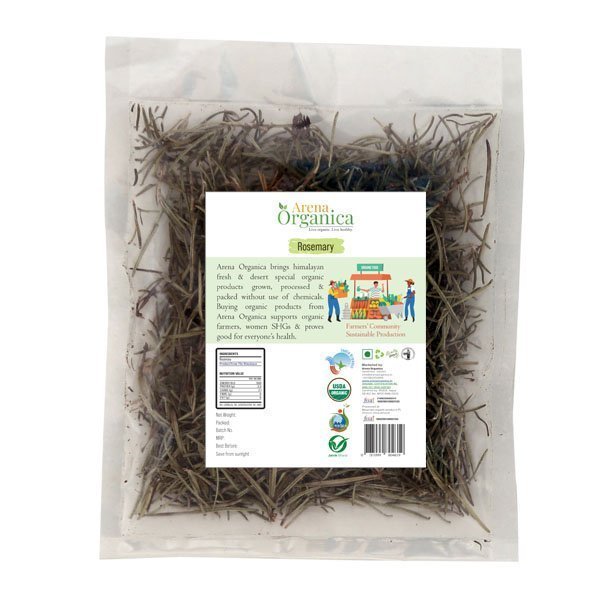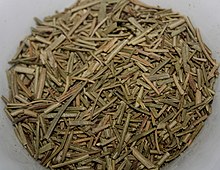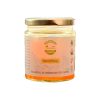Rosemary Leaves – रोजमैरी पत्ते
Know Your Product(KYP)
Salvia rosmarinus, commonly known as rosemary, is a woody, perennial herb with fragrant, evergreen, needle-like leaves and white, pink, purple, or blue flowers, native to the Mediterranean region. Until 2017, it was known by the scientific name Rosmarinus officinalis, now a synonym.
Health Benefits
- It helps Fight Against Heart Disease
- Increases Diuretic & Metabolic Activity.
- Prevent brain aging
- Enhancing memory and concentration
Methods of Use:
- Mix with warm water and honey and take before meals
Know Your Product(KYP) (Continued)
Culinary use
Rosemary leaves are used as a flavoring in foods, such as stuffing and roast lamb, pork, chicken, and turkey. Fresh or dried leaves are used in traditional Mediterranean cuisine. They have a bitter, astringent taste and a characteristic aroma which complements many cooked foods. Herbal tea can be made from the leaves. When roasted with meats or vegetables, the leaves impart a mustard-like aroma with an additional fragrance of charred wood that goes well with barbecued foods.
In amounts typically used to flavor foods, such as one teaspoon (1 gram), rosemary provides no nutritional value. Rosemary extract has been shown to improve the shelf life and heat stability of omega 3-rich oils which are prone to rancidity.
Fragrance
Rosemary oil is used for purposes of fragrant bodily perfumes or to emit an aroma into a room. It is also burnt as incense, and used in shampoos and cleaning products.





Reviews
There are no reviews yet.